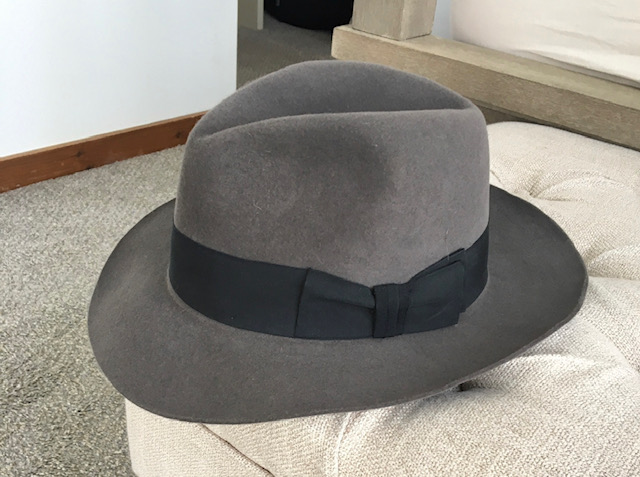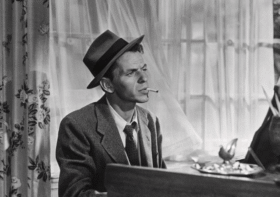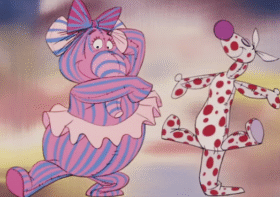4 Tips For Buying A Proper Hat

Convincing more men to wear “proper” hats is always a tough sell. The “Fedora Guy” is a literal meme at this point and no one wants to be associated with that.
I get it, trust me.
And don’t listen to the advice on the internet that tells you that baseball caps are infantile and should be banned from your wardrobe if you want to be considered a stylish man. That’s just ridiculous. I even wrote in a past article that every man should own at least one baseball cap for exercising and extreme casual wear.
I was an ardent baseball cap wearer for much of my life, actually. I wore a faded, red cap in elementary school until it was replaced with a black Buffalo Bills cap I got on a trip to visit my cousin in upstate New York. He and I got matching caps and would wear them every summer we spent together, playing in the creak by his house and eating tomatoes out of my aunt’s garden.
When I got older and became more interested in classic menswear, I wanted to dip my toes into the world of “proper” hats. Unfortunately, I didn’t really know where to start.
In this article, I would like to walk you through some helpful information if you are interested in buying a proper hat.
Now, I’ve mentioned “proper hat” a few times already. What I mean by that is this: a brimmed hat that is not a baseball cap or cloth cap. The reason I exclude cloth caps from this article, even though I love them, is because they fit similarly to a baseball cap so there really isn’t any brilliant advice to be shared on that front.
If you’re new to the hat-wearing game, here are some things to keep in mind…
#1 – Find a proper retailer.
It is important to purchase from a proper retailer for a few reasons.
One, you are sure the product you buy will be of respectable quality. I once made the mistake of purchasing a hat from a brand new company. It was stiff, like cardboard, and was told by the head of the company that I just needed to “break it in”.
Yeah, no thanks.
Two, a proper retailer will be able to answer any questions you may have.
The majority of the hats I own were purchased from a store called J.J Hat Center in New York City. The place has been around for ages and the staff is knowledgeable and considerate.
They are also patient, which is key when you’re not too familiar with how a real hat is supposed to fit, or what style you prefer.
A proper retailer can also make slight tweaks to a hat, if you need it.
After I purchased my Stetson Roadster (online, from J.J. Hat Center), I discovered it was slightly too large for me (Stetsons tend to run large). I brought it into the shop thinking I needed to return it. The salesman simply applied some steam and reshaped the crease somewhat, which allowed for the hat to sit a bit lower on my head. This solved the issue and the hat fit great from then on.

This was only possible because I purchased through a good retailer.
If you’re not in an area with a physical shop, you can certainly trust various brands to provide you with a quality product. Personally, I like Stetson hats and Akubra hats the most. My Stetsons mostly come from the aforementioned J.J. Hat Center. I have purchased Akubras through Everything Australian and The Hattery and both experiences have pleasurable.
#2 – Get the right size (and possibly size up).
A proper hats feels a little different from a baseball cap.
A baseball cap, I find, covers most of the skull, with the sides practically touching where the ears attach to the head. Also, the back of the hat usually covers the rounded part of the back of the skull. The hat can even be pulled down low on the forehead. It’s a very secure fit, which is totally appropriate for a hat worn when tracking fly balls or turning double plays.
Putting on a proper hat for the first time can feel a little strange. It’s hard to tell at first if the hat is too tight or too loose.
The advice you’ll see on the internet states that a hat should be “comfortably snug”. This advice is a good starting point, but listen to your gut. If you feel like you need to squoosh it onto your head, then it’s too small. If you feel like it could easily blow off in a stiff breeze, then it’s too big.
Keep in mind, though, that the hat will likely sit a little higher on the circumference of your head than a baseball cap. These hats aren’t meant to stay put no matter what, and yes, a strong gust of wind may take your hat with it. That’s normal.
Plop the hat on your head. Give it a wiggle. Shake your head a little bit. Is it totally askew? If yes, go down a size.
Bend over. Did it fall off? If yes, go down a size.
However, if when you take it off there’s a red mark on your forehead, then go up a size.
I find that it’s better to have a hat that’s a little too big than a hat that’s too small. The reason for this is that a good hat will have a leather sweatband which will shrink slightly over time. A small hat will get smaller, while a hat that’s a touch too large to begin with will usually shrink to a nice snug custom fit. This is especially true with Akubras. They feel a little roomy at first but tend to shrink down a bit once they get some sweat in them.

#3 – Choose the right material.
For the most part, a good hat will be made of fur felt. Now, fur felt is different from wool felt. Fur felt comes from animals like beavers, rabbits, and hares. Wool felt comes from sheep.
Fur felt is more durable, more water resistant, and looks better than wool felt. Unfortunately, it’s also more expensive. But don’t fret. You can still get a high-quality hat for under $300 (like Akubra).
Wool hats are fine for kick-around hats, but if you want to wear your new hat with tailoring, or just want your hat to have some extra cool factor, then stick with fur felt.
As I already mentioned, you do not have to shell out a crazy amount of money for a good fur felt hat. Also, you don’t need to get a custom hat. If you want to, that’s fine, but know that there is plenty to be had at a reasonable price if you get something off the rack.
If you’re looking for a 100% beaver felt hat, then yes, that will be pretty pricey. But most of us are just looking for a stylish workhorse that won’t break the bank. A rabbit or hare (or blend) fur felt hat will serve you well for years and stand up to a ton of use and abuse.
When it comes to straw hats, I prefer a (made in Ecuador) Panama hat. These are hats that are made from woven straw. The prices on these things vary wildly. A cheaper one will run you a little over $100 while a real, honest-to-goodness Montecristi Panama can be many thousands of dollars.
It should come as no shock that I do not recommend the more expensive variants of these hats. Not only are they ludicrously expensive, but they don’t hold up as well as the cheaper versions.
The very expensive Panamas are absolutely works of art. However, I don’t want to be wearing a work of art on my head when I get caught in the rain. I bought my Panama for $125 and it has been all over the world with me. It’s sweat-stained and starting to crack, and yes, I have been caught in the rain while wearing it. It still comes back for more.
#4 – Figure out what style is right for you.
Just like with anything having to do with clothes, your own personal style can be hard to nail down in the beginning. You may think you like one style of hat, only to discover that a completely different style speaks to you more.
Here are few things to think about when trying to decide on what style of hat suits you best.
Your build – Are you a big guy or a small guy? If you’re a big guy you’re going to want a hat with a taller crown and wider brim. The opposite is true if you have a slight frame.
Take a look at some of the iconic hat-wearers from yesteryear. Their hats are well proportioned to their bodies.
Jimmy Stewart was very tall, so he wore a larger hat than, say, Humphrey Bogart or Frank Sinatra who were both about eight inches shorter.


Formality – In what instances will you be wearing this hat the most? Are you wearing it to the office or while hiking?
If you want a more formal-leaning hat then a hat in a conservative, dark color, with a wider grosgrain band will be your best bet. If you’re going for a more casual look, then a tan, or brown hat with a thin band in leather will serve you well.
If you want to go really formal you can opt for a black or grey homburg. You will get comments on how you look like the Godfather, but homburgs are awesome and more men should wear them.

Bogart wore a homburg and sailed off to France with Audrey Hepburn at the end of Sabrina. That should be all the evidence you need that homburgs are cool.

Crease – The crease, or bash, of a hat refers to how the crown of the hat looks. Usually, fedoras have two dents in the front (a pinch) and either a single crease down the middle or a “teardrop” shape. The preference for one over the other is normally just that: personal preference. But I find there are benefits to each.
A single crease keeps the hat fairly tall, since there is a minimal depression in the top of the crown. If you want the hat to look a little lower, then a teardrop shape is optimal since it requires more material to create it and, thus, lowers the height.
In my experience, a single crease allows water to run off it more easily. If you’re caught in the rain, the water will run off your single creased hat like a fire helmet. A teardrop shape will catch and hold onto water. For this reason, when I am in inclement weather, I opt for my single creased hats.

One note on hat creases: Do not pull the hat down so far on your head so that the crease pops out. I hope I didn’t really need to say that, but I see this all the time, mostly on women who wear wide brimmed hats out to brunch. They must not understand that the crease is there for a reason so they yank the hat down as far as it can go.
Don’t do that.
What about vintage hats?
I’m glad you brought that up.
I’m not as on board with vintage as most menswear enthusiasts appear to be, for a number of reasons (which I have written about before).
When it comes to hats, though, I absolutely understand why someone would gravitate to a vintage piece. Simply put, the construction and materials were much better when hats were worn by pretty much everyone. Obviously, there was plenty of demand for the product back then and hat companies had to compete to keep up.
Unfortunately, vintage hats tend to run small, so unless you’re a small guy you probably won’t find a vintage hat that will fit you.
There’s also the issue of wearing someone’s old, sweat-stained hat. Some people aren’t bothered by it, but I find it weird.
One thing to keep in mind, though, when considering purchasing a real hat is that classic hats are not just for people interested in classic menswear. They are useful and practical, like overcoats or leather gloves.
Just make sure you wear them in appropriate circumstances. You wouldn’t wear an overcoat when it’s 80 degrees outside, even if the overcoat looks cool. It would be out of place and draw unwanted attention.
Likewise, if you wear a dark, felt fedora with a t-shirt and basketball shorts in the summer, it’s going to look a bit bizarre. If you wear it on a drizzly day in November, with a sport coat, you’ll look totally normal and no one is going to bat an eye.
Hopefully, these tips should help you feel more confident purchasing and ultimately donning your first proper hat.



